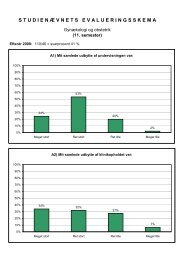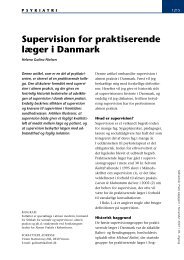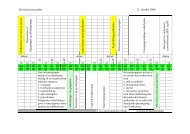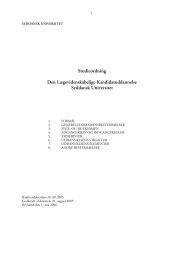shared deliberate practice
shared deliberate practice
shared deliberate practice
Create successful ePaper yourself
Turn your PDF publications into a flip-book with our unique Google optimized e-Paper software.
Shared Deliberate Practice 213individual can engage in between meetings with the teacher. We call these <strong>practice</strong>activities <strong>deliberate</strong> <strong>practice</strong> and distinguish them from other activities, such as playfulinteraction, paid work, and observation of others, that individuals can pursue in thedomain (Ericsson, Krampe, and Tesch-Römer, 1993, p. 368).The question is whether the theory of <strong>deliberate</strong> <strong>practice</strong> rooted in a cognitivistframework of expertise sufficiently accounts for teambased learning? While Simon and Chase(1973) argued that expert skills acquisition in chess and soccer was fundamentally similar interms of pattern recognition, Ericsson and Smith (1991) in a literature review concluded thatexperts after thousands of hours of <strong>deliberate</strong> <strong>practice</strong> differ qualitatively in their informationprocessing. Team sports such as soccer and handball are dynamic and require coordinatedresponses between team players in relation to opponent players as the game unfolds. Teamplayers need the ability to integrate “the operations of the team in a timely way to form acomposition of operations that achieves satisfactory performance” (Ecceles and Tennenbaum,2004, 543).The aims of this article are twofold: (1) to identify and describe the relevant trainingsituations pertaining to high performance handball team training and (2) to examine how thehandball players’ development of expertise depends upon <strong>shared</strong> <strong>deliberate</strong> <strong>practice</strong>. By<strong>shared</strong> <strong>deliberate</strong> <strong>practice</strong> we refer both to ways in which <strong>deliberate</strong> <strong>practice</strong> is <strong>shared</strong>between team players and to the idea that <strong>deliberate</strong> <strong>practice</strong> should be conceived at teamlevel.Our argument is that the <strong>practice</strong> of handball and other team-sports is a matter of socialinteractions and coordinated actions between the players (Ronglan, 2009) and this type of<strong>practice</strong> can fruitfully be extended within the theoretical framework of expertise and<strong>deliberate</strong> <strong>practice</strong> (Ericsson, 2007). The importance of <strong>shared</strong> <strong>deliberate</strong> <strong>practice</strong> as a form ofteambased learning is capturedby Therese Brisson, Olympic gold winner and six times WorldChampion in ice hockey:An important factor in the development of elite athletes is the training group [...] theless experienced athletes learn from the more skilled, and those who are pushing to getthe top challenge the more skilled athletes on a daily basis (Starkes and Ericsson, 2003, p.293).DELIBERATE PRACTICE AND TEAM TRAININGResearch on <strong>deliberate</strong> <strong>practice</strong> suggests that extended engagement within a certain<strong>practice</strong> domain does not in itself necessarily lead to the acquisition of expertise (Ericsson,2007). The development of expertise requires that training activities are specifically designedto improve the performance of the athlete, and that the athlete <strong>deliberate</strong>ly concentrates onimproving particular aspects of his/her performance when engaged in training activities.As a prime example of <strong>deliberate</strong> <strong>practice</strong>, Ericsson uses aspiring experts such asviolinists’ solitary <strong>practice</strong> in which they work to master specific goals determined by theirmusic teachers at weekly lessons (Ericsson, 2006, p. 693) or chess players playing throughpublished games of the very best chess players in the world (Ericsson, 2006, p. 699). Jenkins(2010, p. 6) argues that the notion of <strong>deliberate</strong> <strong>practice</strong> involves the followingcharacteristics: solitary <strong>practice</strong> that is coach mediated, goal-directed, measurable, and highly
















